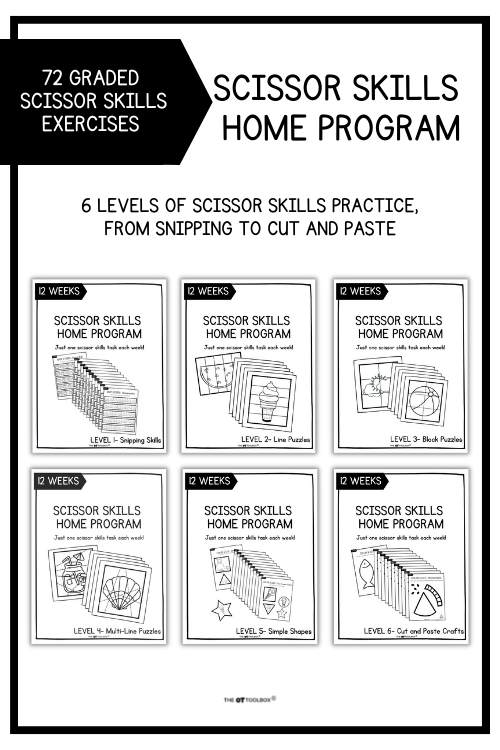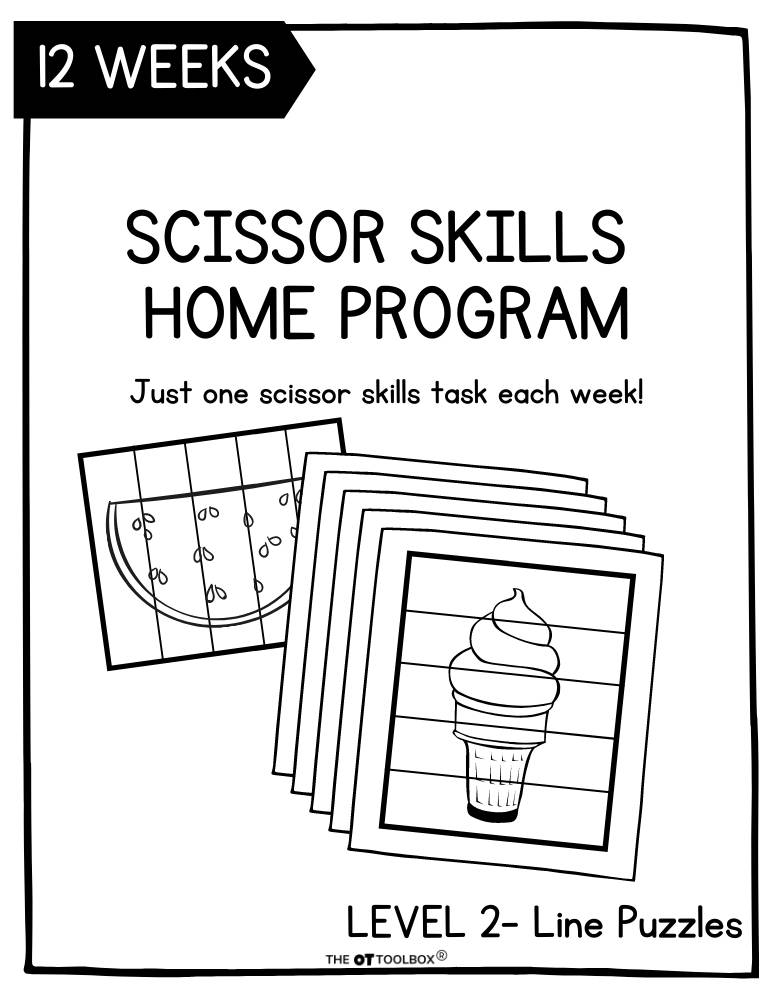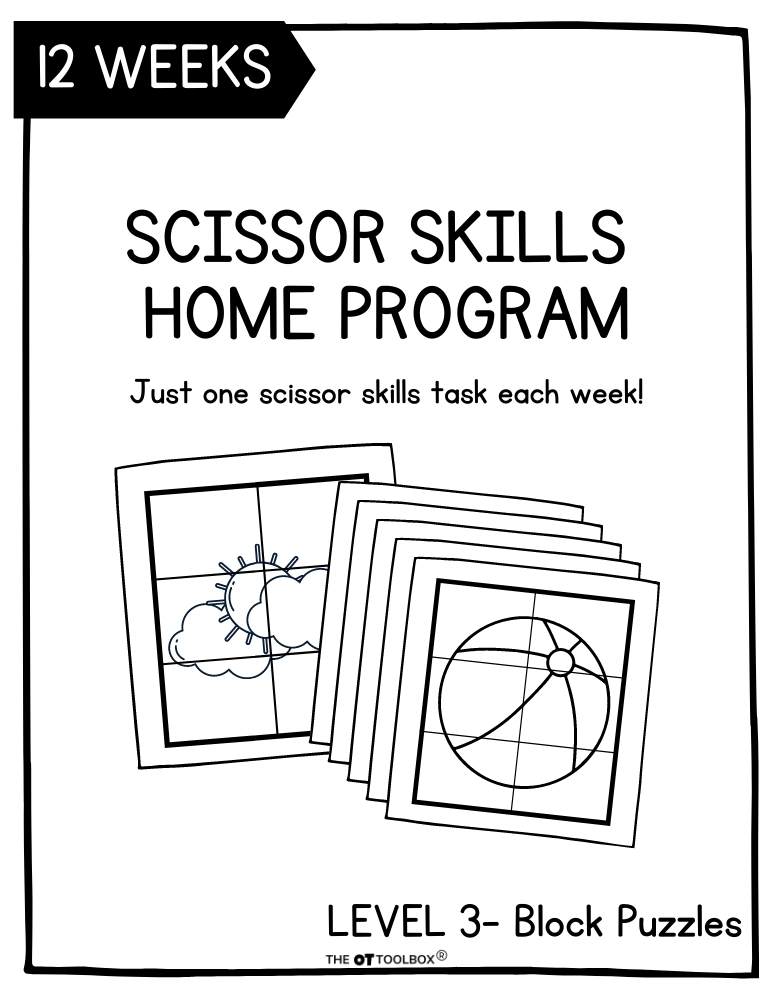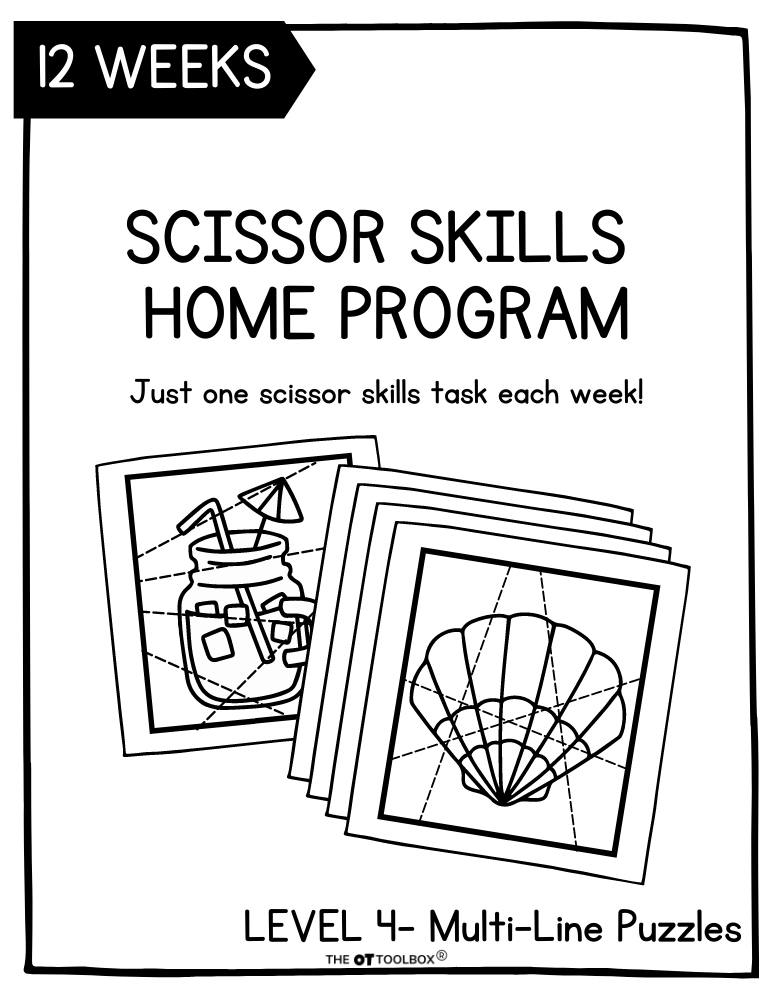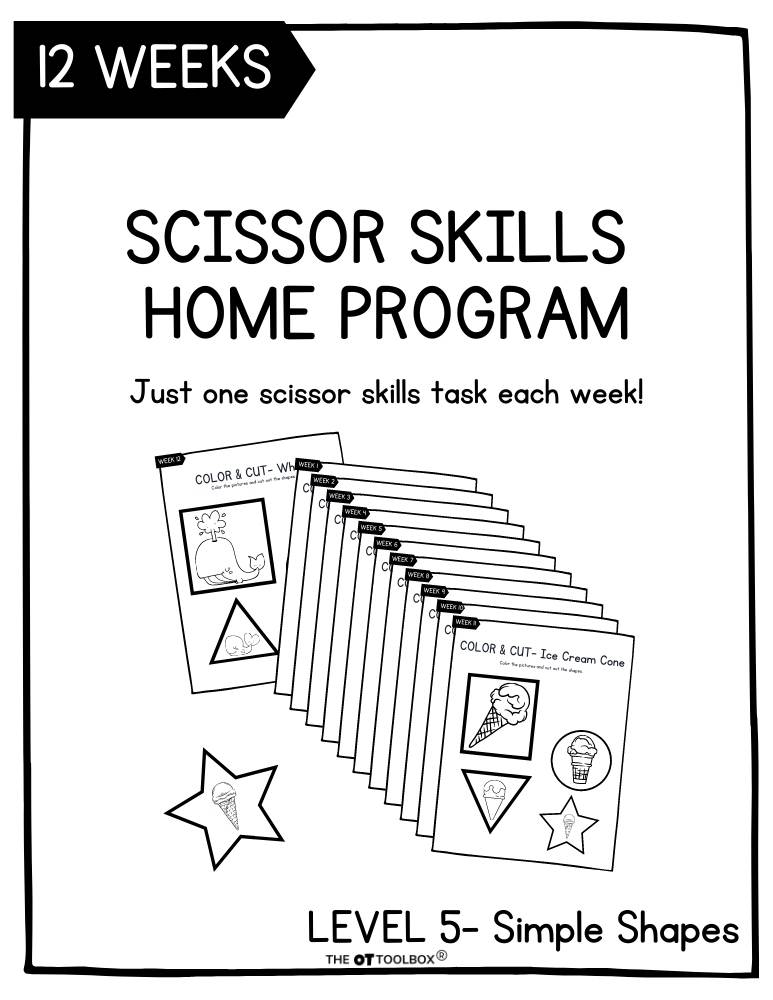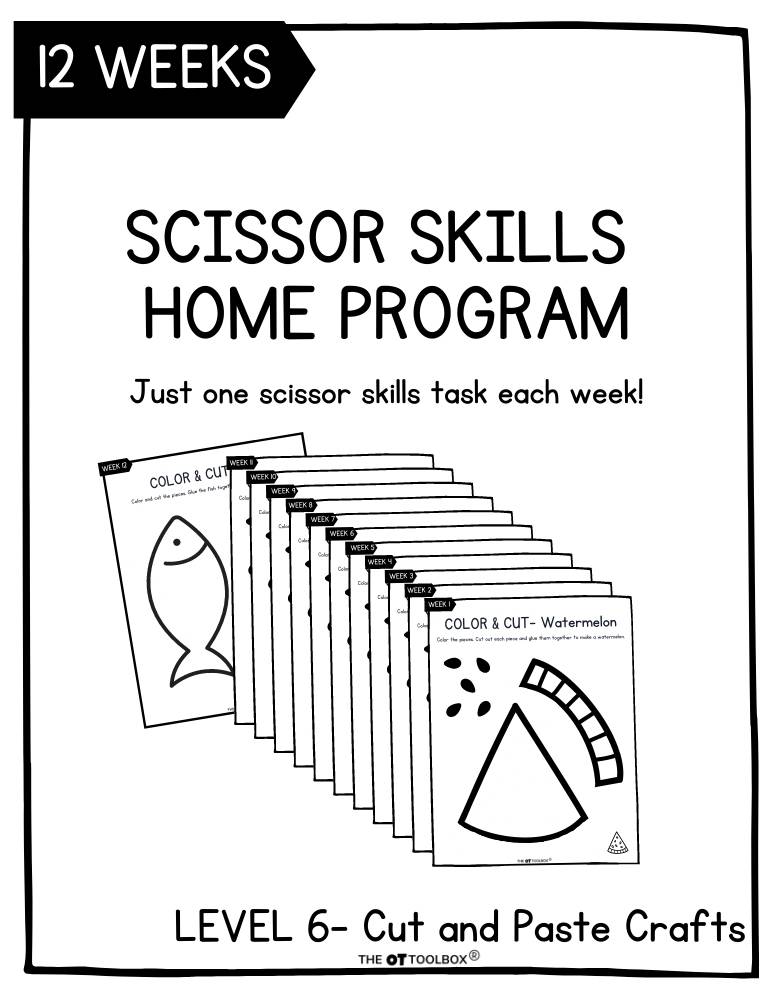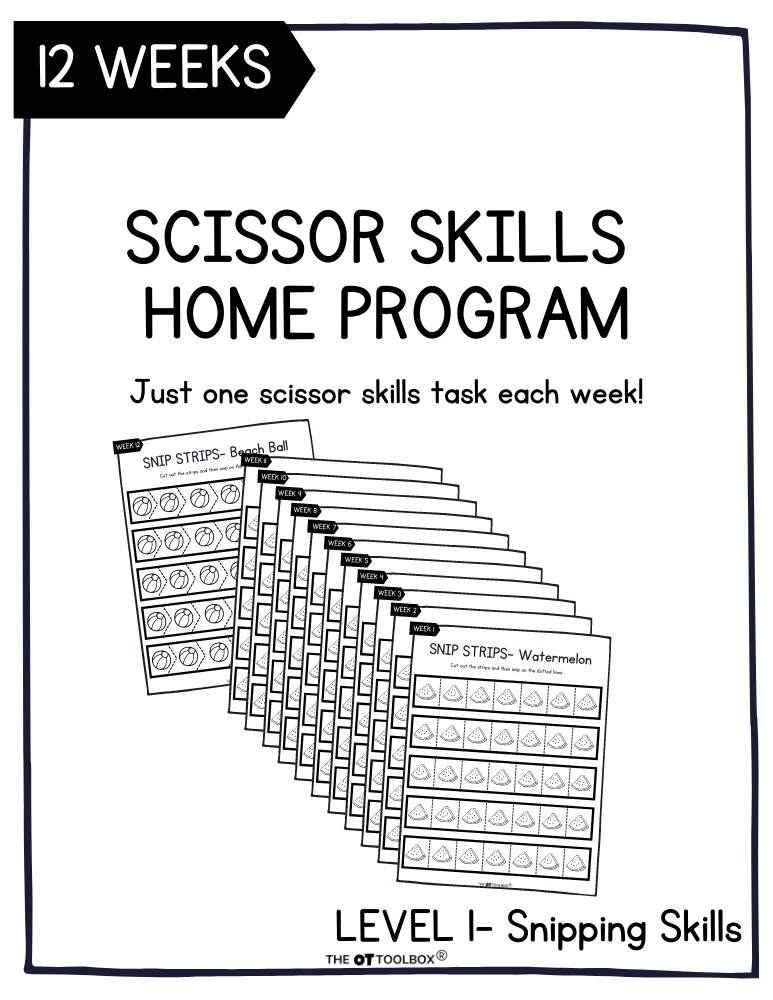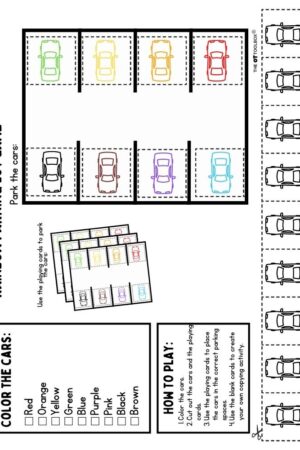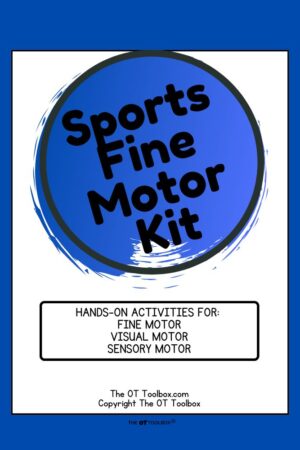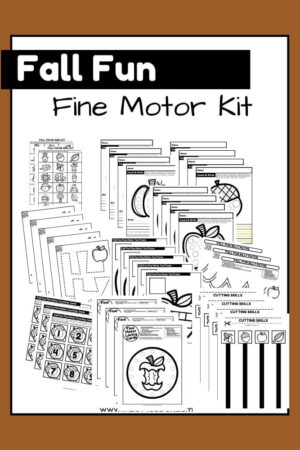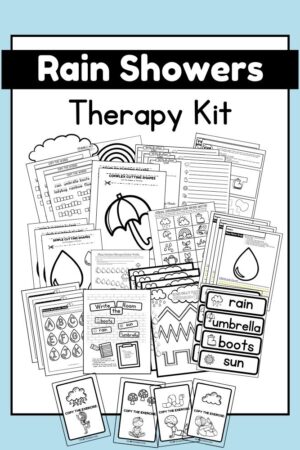Scissor Skills Home Program
$10.00
Using scissors is an important life skill. While caregivers are fearful of giving young children scissors, more practice is needed to learn this core skill!
Included in this Scissor Skills Home Program Pack:
6 levels of scissor skills practice, from snipping to cut and paste
1 page a week for 12 weeks (or days)
= 72 fabulous scissor skills exercise worksheets!
This all inclusive scissors skills home program kit provides a substantial amount of practice sheets, to collect data and carry over this valuable skill. Use this kit as a home program, part of your lesson plan, or as a progressive scissor skills treatment plan.
The versatility of this scissor skills pack allows it to be used over and over with several different groups/levels of learners.
This is a digital file.
Description
Cutting is more than learning to cut shapes out of paper for art projects or schoolwork. It is an important life skill. Teaching correct, efficient scissors skills from the beginning will set the foundation for progressively more complex cutting tasks.
According to standardized testing manuals, a neurotypical child who is of the age to be doing X skill, should be able to watch someone perform this skill and mimic it. A typically developing child over the age of two should be able to watch someone snip for the first time, and repeat this skill.
Because children are lacking fine motor skills in general, and specifically the precursory skills for cutting with scissors, one rarely sees this happen so quickly. Therefore, in addition to building overall fine motor dexterity, practicing scissor skills is necessary.
Why use these pre-printed sheets?
- Consistency – These sheets provide the same lines each time they are used. Scribbling lines onto random sheets of paper does not guarantee they will be consistent, therefore skewing data.
- Reducing cutting random objects – Caregivers everywhere shout that their child has learned to use scissors, and is cutting magazines, hair, books, the dog, or whatever their scissors touch. Using these pre-printed sheets can serve as a reminder, we only cut “this paper”. For a long time, teach young children that these scissors only go to these worksheets.
- Data collection – Therapy regulations revolve more and more around documentation, collecting data, and measuring it. Use these pre-printed sheets to collect weekly data.
- They are cute and fun! – These are much more motivating than hand drawn lines and circles on a scrap of paper.
What is included in the six different levels:
- Snipping strips – progress from tiny one inch snips, to snipping across paper
- Line Puzzles – a larger picture gets cut into puzzle pieces by cutting straight lines
- Block Puzzles – cut a picture into parts, then put back together
- Multi-line Puzzles – a picture gets cut into parts using diagonal and irregular lines
- Simple Shapes – cut simple shapes like a circle, triangle, square, and star
- Cut and Paste – cut and glue pieces of familiar objects to create a whole watermelon, sun, snorkel and mask set, fish, crab, and more
How to use this Scissor Skills Home Program:
- This program is set up to be a 12 week summer home program. Each level provides one page for each week of a 12 week plan. Learners can do one page a week for 12 weeks before moving on to the next level. This provides a basic level of practice, with 72 weeks worth of pages
- The scissor skills home program does not need to be just a summer home program. Skills need to be practiced year round to effectively learn and incorporate them. Use this program year round to build skills
- Why stop with one page per week? Make 5 copies of each page, one for each day of the week, before moving to the next page
- Try a different page a day if your learners are progressing quickly
- Do more than one level at a time. The middle and upper levels can be paired together to create a more comprehensive program
- Print on cardstock for more resistance, or copy paper for lighter weight. Use colored paper for different contrasts
- Work with a partner to see if the pair can put together the snipped puzzle pieces
- Use a highlighter to accentuate border lines
- Measure and document cutting skill: distance from the line, dimension of the figure, thickness of the lines, % on the line, correct scissor position, bilateral hand use, smooth/jagged cutting, assist needed to don scissors and hold paper
- Add additional skills – coloring, gluing, decorating
- Build into a fine motor program – add clothespins, putty, tongs, and other manipulatives
This is a digital file.


